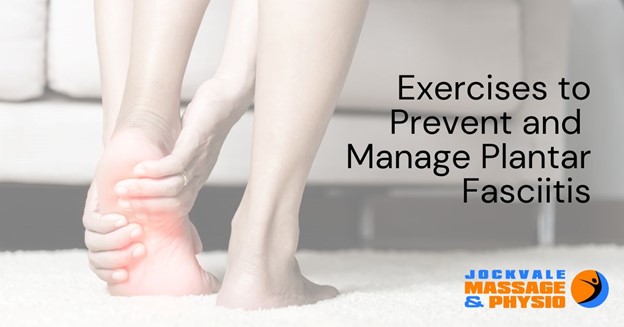Plantar fasciitis is a widespread condition that affects the plantar fascia, a thick band of tissue running along the bottom of the foot. This condition often results in heel pain, particularly in the morning or after a period of rest.
Several factors can contribute to the development of plantar fasciitis, including age, weight, and foot structure. However, one of the most prevalent causes is overuse and tightness in the muscles of the foot and calf. To prevent and manage plantar fasciitis, incorporating specific exercises into your routine can be beneficial.
- Calf stretches: Calf stretches can help to relieve tightness in the muscles that connect to the plantar fascia. To perform a calf stretch, stand facing a wall with your hands against the wall at shoulder height. Step one foot back, keeping your heel on the ground, and bend your front knee. Hold this position for 20-30 seconds before switching to the other side. This exercise can be performed multiple times throughout the day to maintain flexibility in the calf muscles.
- Plantar fascia stretch: This stretch specifically targets the plantar fascia, helping to alleviate tension and pain. To perform the stretch, sit with one leg crossed over the other and gently pull your toes back toward your shin until you feel a stretch in the bottom of your foot. Hold this position for 20-30 seconds before repeating on the other foot. This exercise can be done daily to keep the plantar fascia flexible and pain-free.
- Towel curls: Strengthening the small muscles in your feet can help to prevent plantar fasciitis by providing better support to the plantar fascia. To perform towel curls, sit in a chair with a towel on the floor in front of you. Place your foot on the towel and use your toes to scrunch the towel toward you. Repeat this motion for 10-15 repetitions before switching to the other foot. This exercise can be done daily to build strength in the foot muscles.
- Toe raises: Toe raises help to strengthen the muscles that support the arch of your foot, which can alleviate strain on the plantar fascia. To perform toe raises, stand with your feet hip-width apart and raise your toes off the ground while keeping your heels on the ground. Repeat this motion for 10-15 repetitions. This exercise can be performed daily to improve foot strength and support.
- Ankle circles: Improving ankle mobility can help to reduce strain on the plantar fascia by promoting proper foot alignment and movement. To perform ankle circles, sit with your legs extended in front of you and circle your ankles in one direction for 10-15 repetitions, then switch directions. This exercise can be done daily to maintain ankle flexibility and mobility.
In addition to these exercises, wearing appropriate footwear and avoiding overuse and repetitive motions that can strain the plantar fascia are crucial in preventing plantar fasciitis. If you experience heel pain, rest, ice, and over-the-counter pain medications can be helpful. However, consulting a physiotherapist for a proper diagnosis and treatment plan is essential.
At Jockvale Massage & Physio, our team of experienced physiotherapists can help you manage your plantar fasciitis with a personalized treatment plan that may include exercises, manual therapy, and other techniques. Book your appointment today to get started on your path to pain-free feet!

